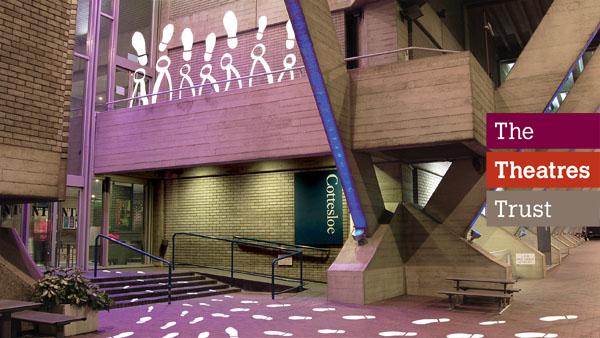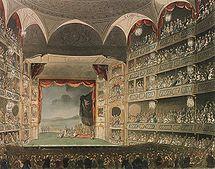
- •Рекомендовано до друку
- •Unit 1. Theatre as the form of art and entertainment
- •3. Complete the sentences choosing the correct variant. Translate the sentences into Ukrainian.
- •4. Complete the sentences choosing the correct variant. Translate the sentences into Ukrainian.
- •Theatre
- •8. Match the two parts of the sentences.
- •9. Match the words in column a with their equivalents in column b. Translate them.
- •10. Fill in the gaps in the sentences below using the words and word combinations from column a in the previous exercise.
- •11. Parts of a stage. Match each part of a stage on the left with its definition on the right
- •12. Actors. Complete the sentences choosing the correct answer. Translate the sentences into Ukrainian.
- •13. People in a play. Match the professions on the left with a definition on the right.
- •14. Match the types of plays with their definitions
- •16. Work in pairs. Write out from the text above the words and word combinations belonging to the following categories:
- •17. Work in pairs. Match the definitions of functions below with the artistic staff professionals in exercise 15.
- •18. Work in pairs. Discuss the artistic staff and technical theatre personnel needed to produce and stage a play. What kind of responsibilities do each of the production team members have?
- •19. Match the words in column a with their equivalents in column b. Give Ukrainian equivalents to the following words.
- •20. A. Useful adjectives for describing works and performances
- •21. Read the dialogues in parts, noting what expressions are appropriate in the situations. Reproduce the dialogues with another student in class.
- •22. Translate, reproduce and learn by heart:
- •23. Translate into English using topical vocabulary.
- •Unit 2 contemporary theatre in britain
- •Contemporary theatre in britain
- •2. Answer the following questions.
- •3. Fill in the blanks with the words listed below. Some of the words may be used more than once.
- •4. Work in pairs. Read the beginning of the text on four London theatres. What do you think the text will focus on?
- •Which of the theatres
- •B. Lyttelton theatre
- •C. Cottesloe theatre
- •D. Soho theatre
- •6. Work in pairs. Find in the texts the words meaning:
- •7. Watch the documentary film “The Drury Lane Theatre” and do the following tasks.
- •1. The history of the theatre.
- •2. The interior of the theatre.
- •3. Famous actors and directors.
- •Unit 3 theatre in ukraine.
- •1. Read the text and be ready to discuss it in the class. Give a good literary translation of the text.
- •The History of Ukrainian Theater
- •2. What or who is identified by the following?
- •3. Answer the questions.
- •4. Read the text and make a chart for b. Stupka’s life Bohdan Stupka
- •Additional texts for reading and discussing
- •Theatre in the United States
- •Broadway
- •The Phantom of the Opera
- •Topical Vocabulary. A Visit to the Theatre
- •Types of Theatre
- •Production Team
- •Література
C. Cottesloe theatre
T he
Cottesloe — named after Lord Cottesloe, chairman of the South Bank
Board (the body responsible for the construction of the National) —
is the smallest, the barest, the most potentially flexible and (for
some people) the most potentially influential of the National houses.
It is a dark-walled rectangular room, which can hold up to 300
people, but may readily be rearranged to take fewer. On three sides
of the room two tiers of pillared galleries look down on an
adjustable floor-space, which has no fixed seating or staging. This
National cockpit may be used for classical staging, for the latest
experimental theatre, or for practically anything in between. You can
stage an event at one end with or without a proscenium, in a corner,
or in the centre. You can clear the floor of seats, or group the
audience close in around a central happening. Everything is open to
change except the galleries.
he
Cottesloe — named after Lord Cottesloe, chairman of the South Bank
Board (the body responsible for the construction of the National) —
is the smallest, the barest, the most potentially flexible and (for
some people) the most potentially influential of the National houses.
It is a dark-walled rectangular room, which can hold up to 300
people, but may readily be rearranged to take fewer. On three sides
of the room two tiers of pillared galleries look down on an
adjustable floor-space, which has no fixed seating or staging. This
National cockpit may be used for classical staging, for the latest
experimental theatre, or for practically anything in between. You can
stage an event at one end with or without a proscenium, in a corner,
or in the centre. You can clear the floor of seats, or group the
audience close in around a central happening. Everything is open to
change except the galleries.
D. Soho theatre
S ituated
in the heart of London's West End, it is a state of the art venue
with theatre, studio and ancillary space and is home to Soho
Theatre's diverse range of new plays, comedy, writers' development
work and an innovative community and education programme. Soho
Theatre's auditorium seats 144-160 people on comfortably cushioned
benches. The seating is unreserved and arranged on a high rake which
means that the sight-lines are excellent wherever you sit. Unlike a
conventional studio space, the stage has an impressive depth and
scale and can be completely transformed with each production. Sets
have ranged from the minimal to a two-story house, a barn and even a
wrestling ring. Whether you're coming to see a play, comedy or join
in a writers' event, you can expect a smart but informal atmosphere
in a contemporary and intimate setting.
ituated
in the heart of London's West End, it is a state of the art venue
with theatre, studio and ancillary space and is home to Soho
Theatre's diverse range of new plays, comedy, writers' development
work and an innovative community and education programme. Soho
Theatre's auditorium seats 144-160 people on comfortably cushioned
benches. The seating is unreserved and arranged on a high rake which
means that the sight-lines are excellent wherever you sit. Unlike a
conventional studio space, the stage has an impressive depth and
scale and can be completely transformed with each production. Sets
have ranged from the minimal to a two-story house, a barn and even a
wrestling ring. Whether you're coming to see a play, comedy or join
in a writers' event, you can expect a smart but informal atmosphere
in a contemporary and intimate setting.
*Laurence Olivier (1907 89) -one of the greatest British actors of the 20th century.
* The National Theatre — a modern building on the South Bank in London containing three famous theatres.
* The Old Vic — a theatre in South London, especially famous for its plays by Shakespeare.
6. Work in pairs. Find in the texts the words meaning:
Text A — administrator, training room, trial, contain, looking like a flat object that you wave to make the air cooler, hall, level, vertical, collected, side, brush off, width, range;
Text B — usual, fundamental, vision position, sound, vision-interfering, column, banister, danger, adjustable;
Text C — non-decorated, transformable, contain, arena, event;
Text D — using the latest methods, materials, or knowledge; place, auxiliary, varied, padded, size, an informal communication with an author, modern.
7. Watch the documentary film “The Drury Lane Theatre” and do the following tasks.
A. Previewing activities. Study the following vocabulary, provide Ukrainian equivalents to the words and word combinations.
|
optical illusion of the dome |
reflectors: polished tin |
|
decor-scenery, set or backdrops |
to be desperate to do smth about |
|
to put the theatre on the map |
green Manchester clay |
|
to take the country by storm |
rigid rehearsal regime |
|
macaroni-fashion victim |
rigid like a poker |
|
footman |
to become a blueprint |
|
to wrinkle |
to be put off |
|
elaborate and spectacular |
innovate stage technique |
|
to demolish |
a new venue – type of performance, space |
|
lamb fat |
green baize |
|
gloom |
rigid |
Match the parts of the theatre with their definitions
|
box |
private seating compartment in theatre, esp. an elevated one |
|
wings |
sides of stage beyond view of audience |
|
gallery pit |
top balcony, usually containing the cheapest seats |
|
footlights |
row of lights set along front edge of stage floor |
|
downstage |
area of stage nearest audience |
|
flies |
area above stage with weights and ropes for manipulating scenery down and up |
|
backstage |
wings, dressing rooms, and other areas behind proscenium out of audience view |
|
green room |
back stage room in which performers relax before, between or after appearances on stage |
Discuss with the students if they
a) could give the names of famous British theatres? Introduce the Royal Drury Lane Theatre.
b) have ever encountered such name as David Garrick? If no, tell the students some words about him.
B. Viewing: watch the documentary and do the following tasks:
1. Describe the 18th century theatre. How does it differ from the modern one?
2. Enumerate the parts of the old theatre.
3. What are the peculiarities of the world’s oldest theatre in Sweden?
4. What kind of illumination did they use in the epoch of D. Garrick?
5. In what way did Garrick use the stage?
6. Describe the style of acting in Garrick’s times.
7. Sum up the information about D. Garrick focusing on how he revolutionized the theatre.
C .
Summary. Tell about the Drury Lane Theatre using the information from
the film and from the text below according to the following plan:
.
Summary. Tell about the Drury Lane Theatre using the information from
the film and from the text below according to the following plan:
